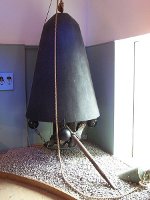History of Scuba Diving Part 1: Diving Bells and Snorkels
Author: John Published Under: Sports

The idea of someone going underwater for extended periods of time is something that has intrigued mankind for thousands of years. However, in practice, being able to safely stay underwater is a relatively new process.
Up until the eighteenth and nineteenth centuries, preforming any type of underwater activity required that you could hold your breath for an extended period of time. Many became adept at this, both out of necessity and curiosity.
During the eighteenth and nineteenth century, humans began experimenting with ways of delivering air to those underwater. One of the most important inventions was a full body suit, which was completely sealed and relied upon a tube that ran to the surface of the water as its air supply. When attached to an air pump, this suit could allow workers to stay underwater longer, while also traveling much further below the surface.
It would not be until the twentieth century, though, that divers would become free from the air tube and actually began to carry their own air supply on their back. However, even well before the eighteenth century when diving evolved, mankind has always sought ways of exploring the underwater world.
One of the earliest ways of swimming underwater was to use a hollowed out reed or other small tube as a sort of snorkel. This was often used in military settings, such as when a Greek Diver named Scyllias swam out to Persian Ships using a snorkel to cut their mooring lines.
Using a snorkel was rather restrictive though and another early diving device was the diving bell. A diving bell is, as implied by its name, a large bell shaped chamber or tube, with an opening at the bottom.
What is a Diving Bell
When a diving bell is lowered into the water, with the open side down, the air in the chamber remains, effectively creating a pocket of air that could be lowered into the ocean.
To see how a diving bell works, all you need is a kitchen sink and a drinking cup. Fill up the sink and hold the drinking cup upside down above the sink, so the top of the cup is facing the water. Then, lower the cup into the water, making sure to keep the cup completely vertical.
As long as the cup is vertical, the air will remain in the cup, but if you tip it to either side, the air will rise to the surface. This experiment shows the principal behind the diving bell.
As time progressed, much more advanced diving bells were developed, which could have their air supplies replenished and allowed for the divers to exit the bell underwater and work around it, with a tube connected to the bell for air.